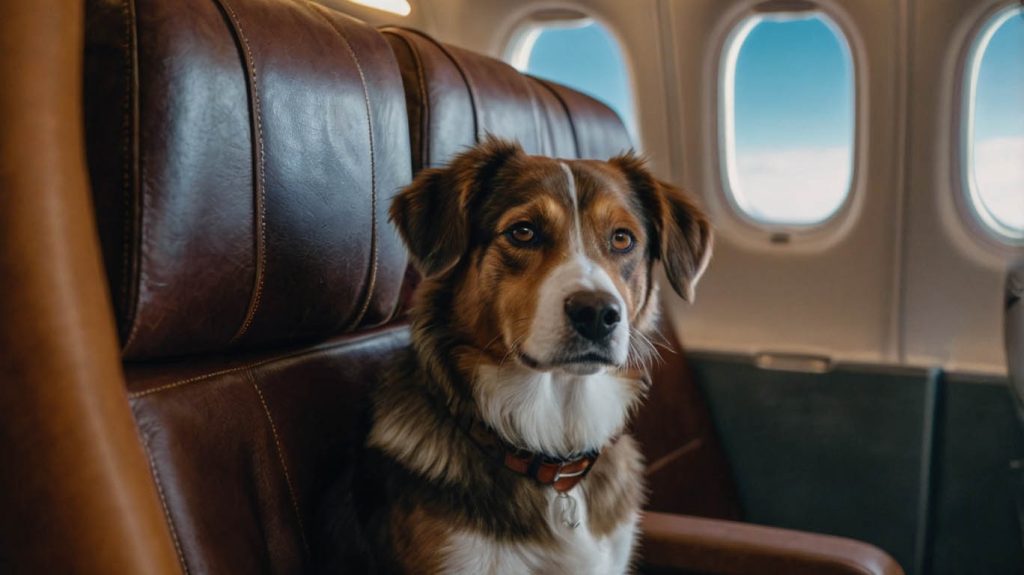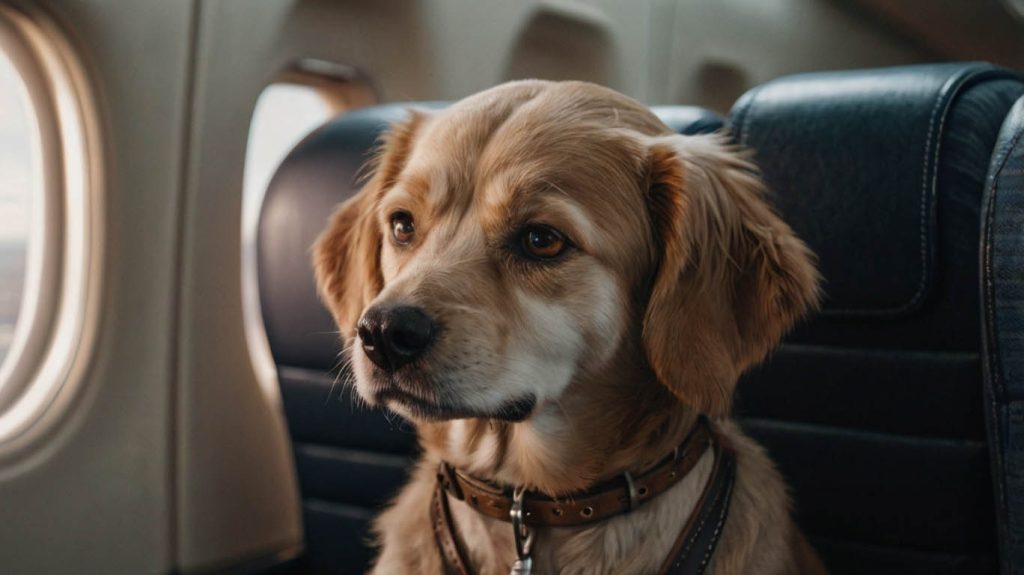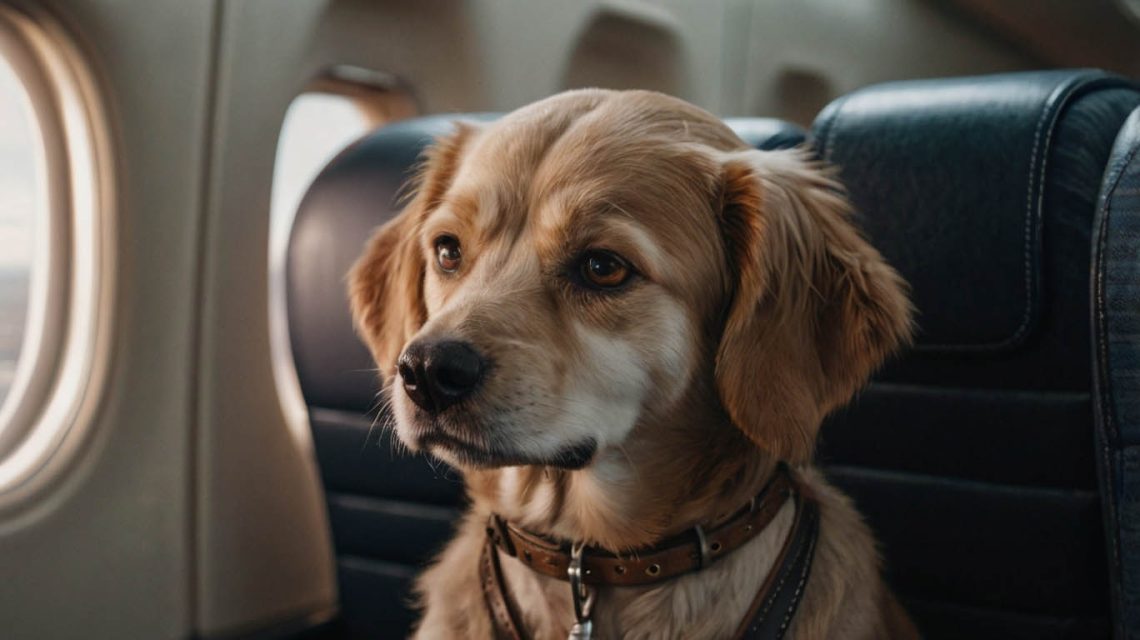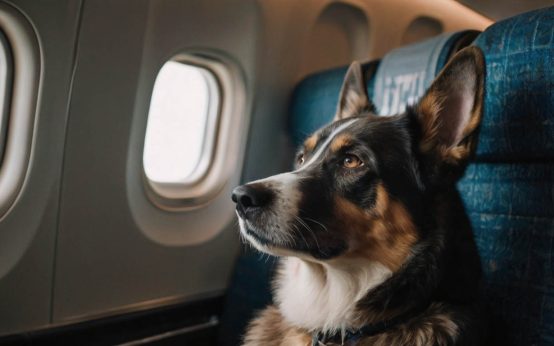How to Travel with a Dog on a Plane: The Ultimate Step-by-Step Guide
The thought of an upcoming vacation is exciting, but then a question pops into your mind: “How can I bring my dog?” Suddenly, the logistics can feel overwhelming. The good news is that with careful planning, learning how to travel with a dog on a plane can be a smooth and successful experience. It is not as simple as booking a ticket; in fact, it requires a series of deliberate steps to ensure your dog’s safety and comfort.
This comprehensive guide is designed to be your ultimate checklist. We will walk you through the entire process, from the initial planning stages months in advance to the moment you and your furry co-pilot land safely at your destination. Consequently, by following these steps, you can eliminate the anxiety and focus on the adventure ahead. This is everything you need to know about how to travel with a dog on a plane.
The First Big Decision: In-Cabin vs. Cargo
Before you do anything else, you must determine how your dog will fly. This decision depends almost entirely on your dog’s size and the airline’s specific policies.

Option 1: Flying In-Cabin
This is the preferred and safest method for small dogs. Your dog flies in an airline-approved carrier that fits under the seat in front of you.
- Requirements: Generally, only dogs that weigh under 20-25 pounds (including the carrier weight) are eligible. Each airline has its own specific limits, so you must verify.
- Pros: Your dog stays with you, reducing stress for both of you. You can monitor their comfort and well-being throughout the flight.
- Cons: Limited to small breeds. Pet-in-cabin spots are limited per flight, so you must book early.
Option 2: Flying in Cargo
For larger dogs, the cargo hold is the only option. They travel in a hard-sided, IATA-approved kennel in a temperature-controlled, pressurized section of the plane.
- Requirements: You will need a specific type of rigid, secure kennel. Airlines have strict rules about this.
- Pros: Allows large dogs to travel on the same flight as you.
- Cons: This can be a very stressful experience for a dog. There are also risks associated with temperature fluctuations and rough handling. Crucially, most airlines will not transport brachycephalic (flat-faced) breeds like Pugs, Bulldogs, or Boxers in cargo due to respiratory risks.
Your Step-by-Step Guide on How to Travel with a Dog on a Plane
Once you have determined whether your dog will fly in-cabin or cargo, it’s time to execute the plan. The key to success is starting early.
Step 1: Contact the Airline Directly (Before Booking!)
This is the most critical first step in learning how to travel with a dog on a plane. Do not book your ticket online without speaking to a representative.
- Action: Call the airline’s customer service line. Inform them you plan to travel with a dog. Ask them:
- Do you have pet spots available on this specific flight? (There’s a limit per flight).
- What are your exact size and weight restrictions for in-cabin pets?
- What are the specific requirements for the health certificate?
- What is the pet fee? (Typically 95−95−125 each way).
- Why it’s important: A flight might show available seats online, but all the pet spots could already be taken. Confirming availability first prevents a major headache.
Step 2: Visit Your Veterinarian
Your vet is your essential partner in this process. You will need a Certificate of Veterinary Inspection (CVI), also known as a health certificate.
- Action: Schedule a vet appointment. Most airlines require the health certificate to be issued within 10 days of your departure date. At the appointment, your vet will confirm your dog is healthy, up-to-date on vaccinations (especially rabies), and fit to fly.
- Microchip Check: Ensure your dog’s microchip is registered and your contact information is current. While not always required for domestic travel, it is a crucial safety precaution.
Step 3: Choose the Best Carrier for Traveling on a Plane
The right carrier is non-negotiable. It is your dog’s home base and safety zone during the trip.
- For In-Cabin Travel:
- Soft-sided carriers are best. They have more give and can be compressed slightly to fit under different seat dimensions.
- Measure carefully. The carrier must fit under the seat, so check the airline’s maximum dimensions. Common dimensions are around 18″L x 11″W x 11″H.
- Look for features like excellent ventilation, locking zippers, a waterproof bottom, and a padded shoulder strap.
- For Cargo Travel:
- You must use an IATA-compliant hard-sided kennel.
- It must be large enough for your dog to stand up, turn around, and lie down comfortably.
- It needs to be made of rigid plastic, have a metal door, and proper ventilation on all four sides. Secure it with metal nuts and bolts (plastic clips are often forbidden).
Step 4: Get Your Dog Comfortable with the Carrier
This step is vital for reducing your dog’s stress on travel day. A positive association with the carrier is a key part of how to travel with a dog on a plane successfully.
- Action: Weeks before your trip, leave the carrier open in your living room. Place treats, favorite toys, and a comfy blanket inside. Feed your dog their meals inside the carrier. Gradually, start zipping it closed for a few minutes at a time while you’re right there. Work your way up to longer durations.

The Day of Your Flight: How to Travel with a Dog on a Plane Smoothly
The day has arrived! Your preparation will now pay off.
Morning of the Flight
- Exercise: Take your dog for a long walk or a vigorous play session. A tired dog is a calm dog.
- Food and Water: Provide a light meal about 4 hours before the flight to prevent an upset stomach. You can offer small amounts of water.
- Final Potty Break: Give your dog one last chance to relieve themselves right before you head into the airport. Most airports now have designated pet relief areas.
Navigating the Airport
- Check-In: You must check in at the counter; you cannot use a kiosk when traveling with a pet. Have your dog’s health certificate and reservation details ready.
- Security Screening (TSA): This is a point of anxiety for many owners. You will be required to take your dog out of the carrier. The carrier will go through the X-ray scanner, while you walk through the metal detector holding your dog. A TSA agent may also swab your hands. Keep a firm grip on your dog’s harness during this process.
On the Aircraft
- Boarding: Once on the plane, place the carrier securely under the seat in front of you. It must stay there for the entire flight, with the door zipped.
- During the Flight: You can speak to your dog to soothe them and may be able to put your fingers through the mesh for a comforting touch. Do not give them food or large amounts of water on the plane unless on a very long flight and advised by your vet.
What NOT to Do: Critical Safety Warnings
Knowing how to travel with a dog on a plane also means knowing what to avoid.
- DO NOT Sedate Your Dog: This is the most important rule. The American Veterinary Medical Association (AVMA) strongly advises against it. Sedatives can affect a dog’s respiratory and cardiovascular systems, which can be dangerous at high altitudes. They can also interfere with a dog’s ability to balance and regulate their body temperature. If your dog is extremely anxious, speak to your vet about prescription anti-anxiety medications (like Trazodone or Gabapentin), which are different from sedatives.
Conclusion: Preparation is Everything
Success in air travel with your best friend doesn’t come down to luck; it comes down to meticulous preparation. By understanding the rules, starting the process early, and prioritizing your dog’s comfort and safety, you can master how to travel with a dog on a plane. From choosing the right carrier to navigating the airport like a pro, every step you take in advance makes the journey smoother. Now you’re ready to create wonderful new memories together in a brand-new destination.
Have you traveled with your dog on a plane before? Share your experience or ask any questions in the comments below! Your tips could help a fellow pet parent.



 How to Travel with a Dog on a Plane: The Ultimate Guide
How to Travel with a Dog on a Plane: The Ultimate Guide